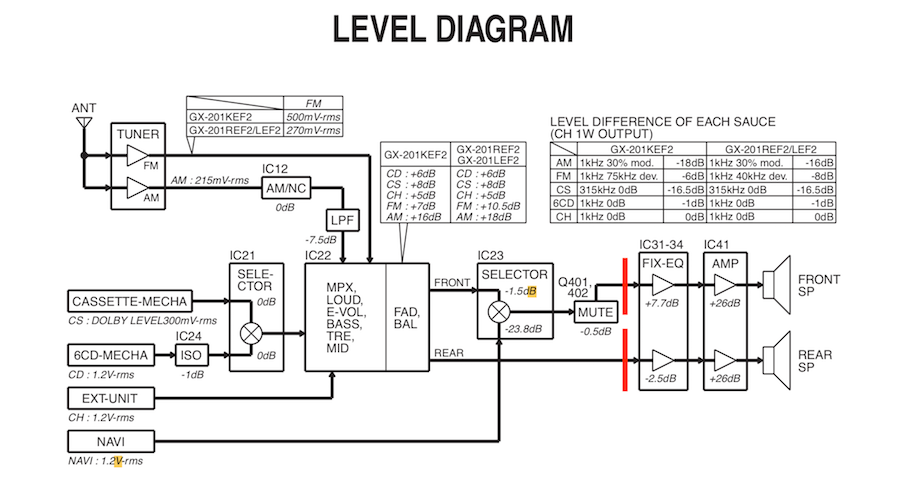You have a 0-14V supply available in automotive systems, there's no negative supply available unless you generate one (some power amps do that with a switching supply), so to deal with bipolar signals the easy thing to do is to have a reference at some mid voltage so that the amps can swing either side of that reference. In this case, IC34 generates a 4V reference that is used by ICs 31-34, so the signal you need is at pin 12, but is relative to this 4V reference. If you follow the lines to and from these amps, they are all decoupled with capacitors, to prevent the DC offset being amplified by following stages, and that's what you also need to add in - plus a resistor at the far side to bias the output around zero volts. Your external amp probably also has some decoupling to allow its input stage to operate offset, but may be sensing that DC voltage causing the shutdown.
The IC 31-34 amps do have some RC filtering in their feedback circuits, so the pin 12 signals do represent the least mucked about with signals you are looking for. The datasheet for these amps is at https://www.njr.com/semicon/PDF/NJM2060_E.pdf if you want to work out the schematic.
 I used the IC31-34 pin12 to get the signal, but when I connected it to my external amp line in inputs it went to protective mode. I measured the voltage and it was 4V dc.
Will it work if I put some resistors to lower the voltage?
I used the IC31-34 pin12 to get the signal, but when I connected it to my external amp line in inputs it went to protective mode. I measured the voltage and it was 4V dc.
Will it work if I put some resistors to lower the voltage?